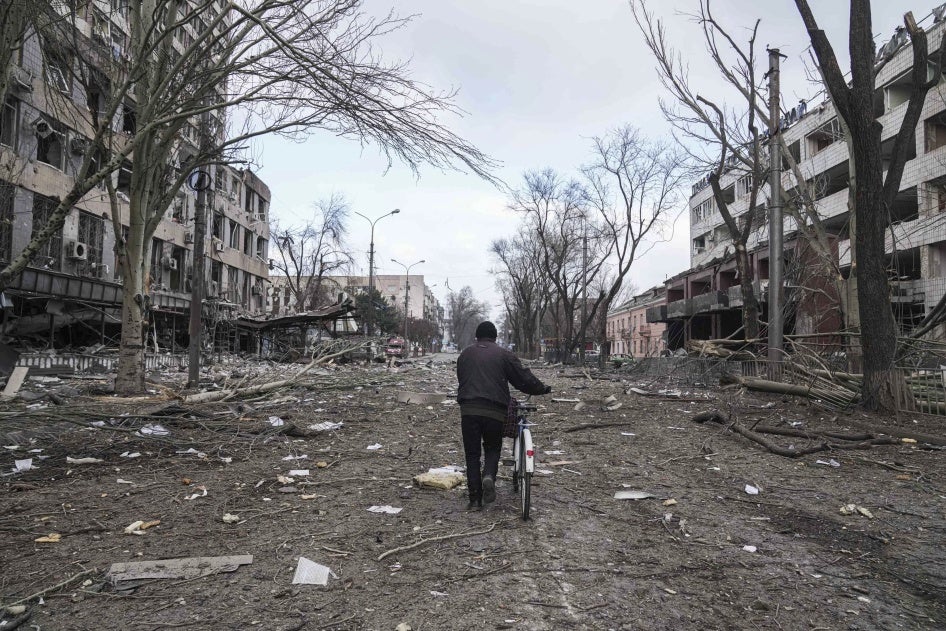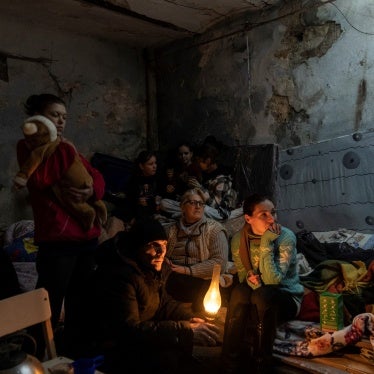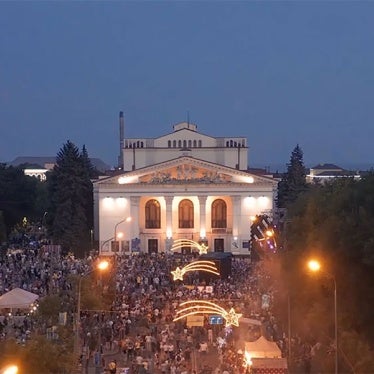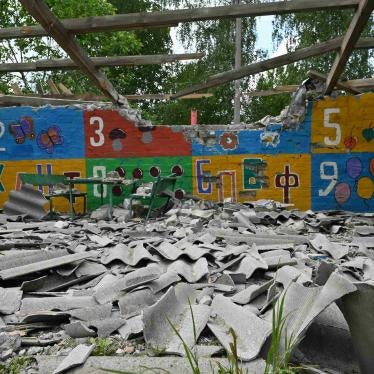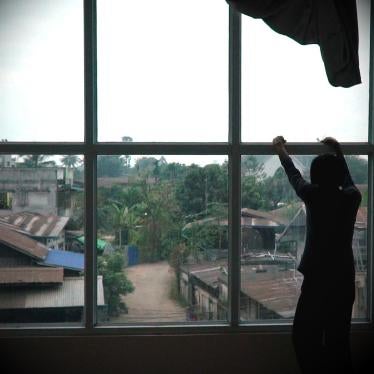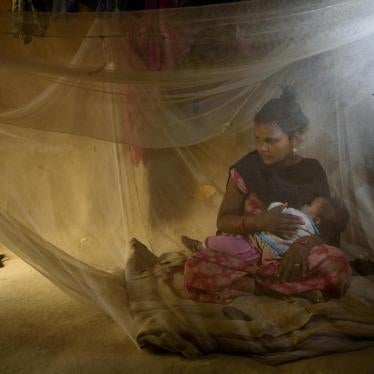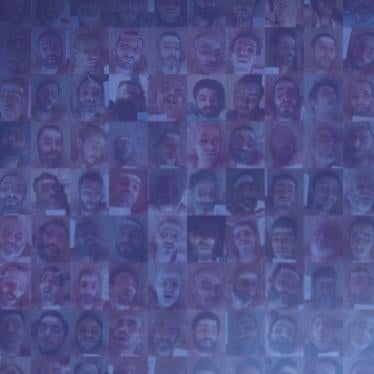- Russlands Angriff auf die ukrainische Stadt Mariupol im Jahr 2022 forderte Tausende von Toten und Verletzten unter der Zivilbevölkerung. Viele Angriffe waren mutmaßlich rechtswidrig, wie neue Erkenntnisse zeigen.
- Die Verwüstung von Mariupol durch russische Truppen und die anhaltenden Versuche, die ukrainische Kultur auszulöschen, gehören zu den schlimmsten Verbrechen der groß angelegten Invasion in der Ukraine.
- Internationale Organisation und Staaten, die für Gerechtigkeit sorgen wollen, sollten gegen hochrangige russische Beamte ermitteln, die in Kriegsverbrechen in Mariupol verwickelt gewesen sein könnten.
(Kiew, 8. Februar 2024) – Der militärische Angriff Russlands auf die ukrainische Stadt Mariupol zwischen Februar und Mai 2022 forderte Tausende zivile Toten und Verletzte. Viele davon dürften bei mutmaßlich rechtswidrigen Angriffen zu Schaden gekommen sein, während Hunderttausende wochenlang ohne Grundversorgung auskommen mussten, so Human Rights Watch, Truth Hounds und SITU Research in einem heute veröffentlichten Bericht mit umfangreichen neuen Erkenntnissen. Es sollte untersucht werden, welche Rolle der russische Präsidenten Wladimir Putin und andere hochrangige Beamte bei den mutmaßlichen Kriegsverbrechen gespielt haben, die russische Truppen während der dortigen Kämpfe begangen haben, und die Verantwortlichen sollten strafrechtlich verfolgt werden. Außerdem sollte Russland für Menschen, die bei Verstößen gegen das Kriegsrecht zu Schaden gekommen sind, und ihre Familien Entschädigung leisten.
Der 224-seitige Bericht, „,Our City Was Gone‘: Russia's Devastation of Mariupol, Ukraine“ (dt. etwa: ‚Unsere Stadt ist verschwunden‘: Die Verwüstung von Mariupol, Ukraine, durch Russland), ein begleitendes Multimedia-Feature und ein 20-minütiges Video dokumentieren das Leid der Zivilbevölkerung und die Schäden an Tausenden von Gebäuden, darunter Krankenhäuser, Bildungseinrichtungen und mehrere Hundert Wohnhochhäuser, sowie an der Strom- und Wasserinfrastruktur. Sie zeigen, wie ukrainische Beamt*innen und internationale Organisationen wiederholt darum bemüht waren, Evakuierungsmaßnahmen und Hilfslieferungen zu organisieren, und es regelmäßig mit Widerstand von russischer Seite zu tun hatten.
„Die Verwüstung von Mariupol durch russische Truppen ist eines der schlimmsten Kapitel der Großinvasion der Ukraine“, sagte Ida Sawyer, Direktorin der Abteilung Krisen und Konflikte bei Human Rights Watch. „Internationale Organisation und Staaten, die für Gerechtigkeit sorgen wollen, sollten gegen hochrangige russische Beamte ermitteln, die die mutmaßlichen Drahtzieher für die Kriegsverbrechen in dieser einst pulsierenden Stadt sind.“
Der Bericht basiert auf 240 Interviews von Human Rights Watch und Truth Hounds, einer führenden ukrainischen Menschenrechtsorganisation, mit zumeist vertriebenen Einwohner*innen von Mariupol sowie auf einer Analyse von über 850 Fotos und Videos, Dokumenten und Dutzenden von Satellitenbildern durch Human Rights Watch und SITU Research. Das Multimedia-Feature enthält digitale 3D-Rekonstruktionen von sieben Gebäuden, die bei mutmaßlich rechtswidrigen Angriffen beschädigt wurden, Grafiken zu beschädigten Schulen und Krankenhäusern sowie eine Zählung von Grabstätten, um die Zahl der Toten zu schätzen.
Im Detail dokumentierten die Organisationen 14 Angriffe, bei denen 18 Gebäude beschädigt oder zerstört wurden und Zivilist*innen ums Leben kamen oder verletzt wurden, darunter zwei Krankenhäuser, das Theater der Stadt, in dem Zivilist*innen Schutz suchten, ein Lebensmittellager, eine Hilfsgüterverteilungsstelle, ein Supermarkt sowie Wohngebäude, die als Schutzunterkünfte dienten. Bei diesen Angriffen fanden Human Rights Watch und Truth Hounds entweder keine Hinweise auf die Präsenz ukrainischer Truppen in den oder in der Nähe der angegriffenen Gebäude oder nur Hinweise auf eine begrenzte Militärpräsenz, so dass die Angriffe mutmaßlich unrechtmäßig waren.
Ein Mann, der nach einem Angriff auf ein Wohngebäude am 13. März 2022 bei der Rettung von Überlebenden und der Bergung von Leichen aus den Trümmern half, beschrieb die Situation folgendermaßen: „Das Gebäude wurde einfach pulverisiert.“, sagte er. „Es war fast nichts mehr übrig, nur ein Teil eines Badezimmers und ein Teil eines Flurs … [Ein Mann neben seiner toten Mutter] war voller Blut. Ihm kam Blut aus den Ohren, der Nase und den Augen, und er weinte … [Ein anderer Mann] hielt sein lebloses Kind und sprach mit ihm. Er sagte immer wieder: ‚Das Kind weint nicht.‘“ Bei dem Angriff wurden acht Zivilist*innen getötet und drei weitere verletzt.
„Obgleich es sich als schwierig erweist, Kriegsverbrechen in Gebieten zu untersuchen, die aufgrund der russischen Besatzung unzugänglich sind, haben wir und unsere Partner fast zwei Jahre damit verbracht, die Wahrheit über die schrecklichen Verbrechen aufzudecken, die russische Truppen in Mariupol begangen haben“, sagte Roman Avramenko, Geschäftsführer von Truth Hounds. „Mit dieser Untersuchung wollen wir dafür sorgen, dass diese Verbrechen nie in Vergessenheit geraten und die Täter vor Gericht gestellt werden.“
Die Analyse von Satellitenbildern, Fotos und Videos der Hauptfriedhöfe der Stadt ergab, dass zwischen März 2022 und Februar 2023 mehr als 10.000 Menschen in Mariupol begraben wurden. Unter Berücksichtigung der üblichen Sterblichkeitsrate in der Stadt und der Anzahl neuer Gräber in dieser Zeit gehen die Organisationen davon aus, dass schätzungsweise mindestens 8.000 Menschen an den Folgen von Kämpfen oder kriegsbedingten Ursachen gestorben sind. Wie viele von ihnen Zivilist*innen waren, ist nicht bekannt.
Die Gesamtzahl der Toten könnte deutlich höher sein, da viele Gräber mehrere Leichen enthalten und die Überreste anderer Personen vermutlich unter den Trümmern begraben wurden. Einige könnten auch in Behelfsgräbern liegen, andere wiederum sind möglicherweise später an den Folgen des Krieges gestorben. Einige Familienmitglieder von Vermissten suchen noch immer nach ihren Angehörigen.
Tausende von Menschen wurden verletzt, viele von ihnen verloren Gliedmaßen, ihr Augenlicht, ihr Gehör oder ihr Gedächtnis, zum Teil durch explosionsbedingte Schädel-Hirn-Traumata.
Der Bericht benennt 17 russische und mit Russland verbündete Militäreinheiten, die im März und April 2022, also zum Höhepunkt der Kämpfe, in Mariupol im Einsatz waren.
Die Organisationen benennen darüber hinaus weitere zehn Personen, die im Rahmen ihrer Befehlsgewalt für Kriegsverbrechen wegen rechtswidriger Angriffe und die mutmaßlich willkürliche Blockade von humanitärer Hilfe und Evakuierungen strafrechtlich verfolgt werden könnten. Sie könnten auch im Zusammenhang mit der Zwangsumsiedlung von Einwohner*innen von Mariupol nach Russland und in die von Russland besetzten Gebiete Kriegsverbrechen und möglicherweise Verbrechen gegen die Menschlichkeit begangen haben. Nach der im Völkerrecht festgeschriebenen Vorgesetztenverantwortlichkeit können Vorgesetzte für Verbrechen eines Untergebenen verantwortlich gemacht werden, wenn sie davon wussten oder hätten wissen müssen, und diese geschehen ließen, anstatt sie zu verhindern oder entsprechende Ermittlungen anzustellen.
Am 4. Dezember 2023 übermittelte Human Rights Watch der russischen Regierung eine Zusammenfassung der Ergebnisse des Berichts und eine Liste von Fragen. Bis zum 1. Februar hat es jedoch noch keine Antwort gegeben.
Seit der Besatzung der Stadt hat Russland neue Hochhäuser bauen lassen. Das ist Teil des erklärten russischen Plans, Mariupol bis 2035 wiederaufzubauen und neu zu gestalten. Eine Besatzungsmacht ist verpflichtet, Trümmer zu beseitigen und unsichere Gebäude abzureißen, um die Bevölkerung zu schützen. Angesichts dessen, dass Russland unabhängigen Ermittler*innen den Zugang zur Stadt verwehrt, wurden physische Beweise an Hunderten von potenziellen Tatorten vernichtet.
Die Besatzungstruppen sind bemüht, auch ukrainische Identitätsmerkmale auszulöschen, indem sie einen russischen Lehrplan in Schulen einführen und Straßen umbenennen. Für bestimmte Arbeitsstellen sowie Sozialleistungen brauchen Bewohner*innen einen russischen Pass.
In Mariupol, wie auch anderswo in der Ukraine, setzten russische und mit ihnen verbündete Truppen in großem Umfang Explosivwaffen mit großflächiger Wirkung ein, darunter Panzerbeschuss und schwere Artillerie, Mehrfachraketenwerfer, Raketen und Luftangriffe auf bewohnte Gebiete. Der Einsatz solcher Waffen in bewohnten Gebieten und deren verheerende Folgen für die Zivilbevölkerung und die zivile Infrastruktur sind ein weiteres Indiz dafür, dass diese Angriffe wahllos und unverhältnismäßig – und damit unrechtmäßig – sind.
„Mariupol steht beispielhaft für die grausame Zerstörung und das Leid, das durch Explosivwaffen in Städten und Gemeinden auf der ganzen Welt verursacht wird“, erklärte Sawyer. „Alle Regierungen sollten sich für Gerechtigkeit für die in der Ukraine begangenen Verbrechen einsetzen und die Internationale politische Erklärung zur Bekämpfung von Explosivwaffen in bewohnten Gebieten unterzeichnen.“
